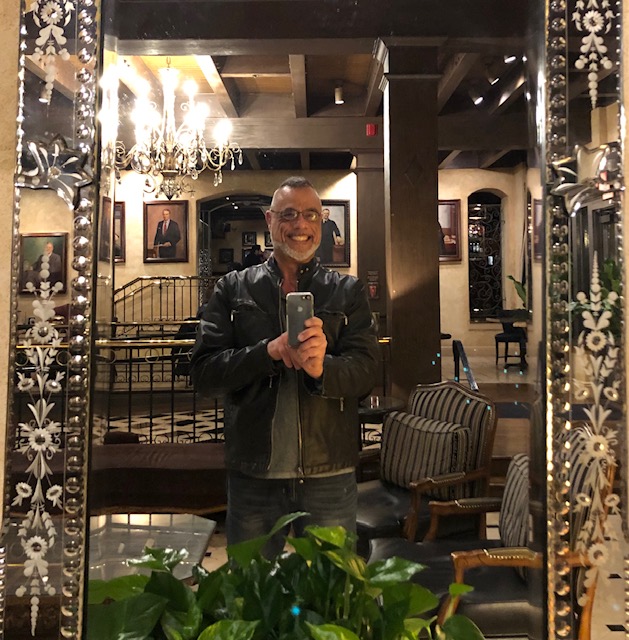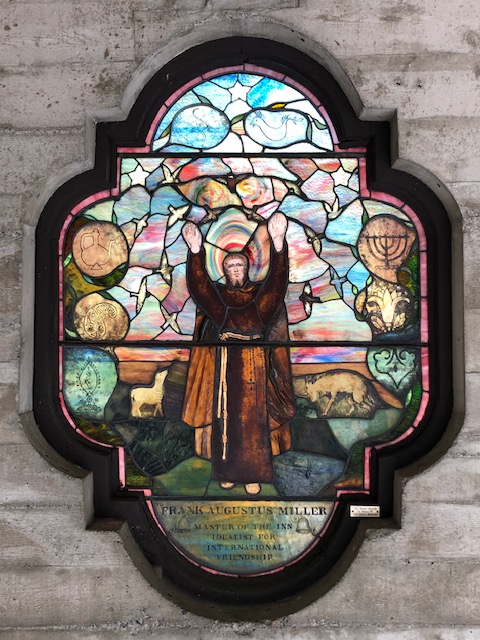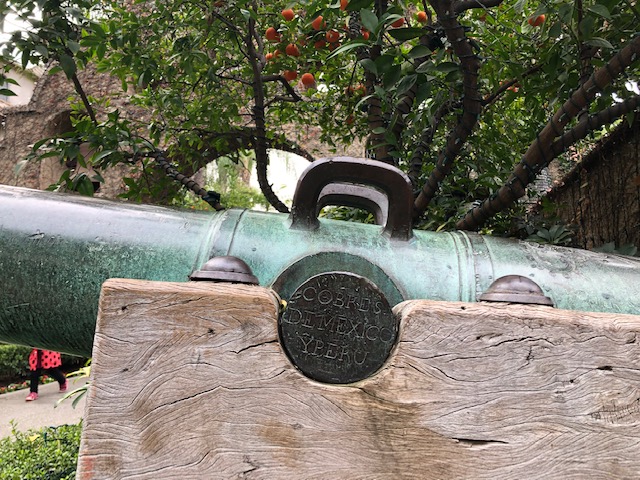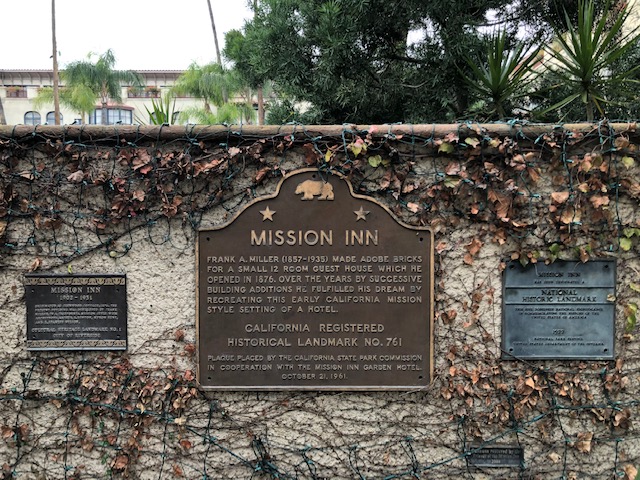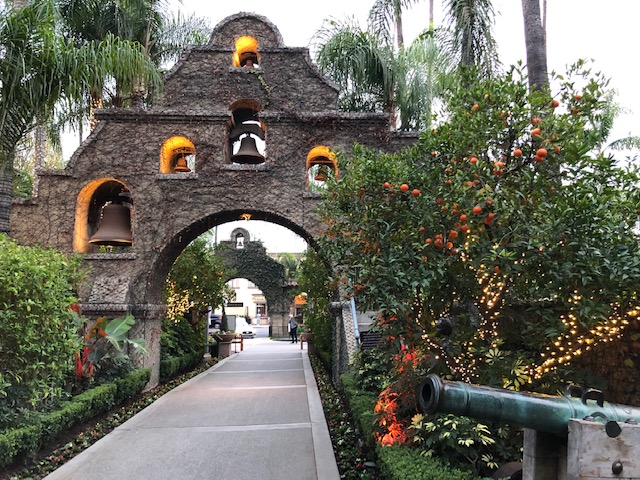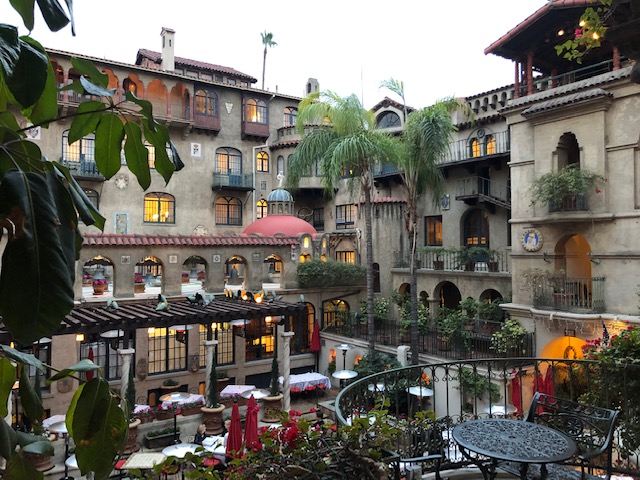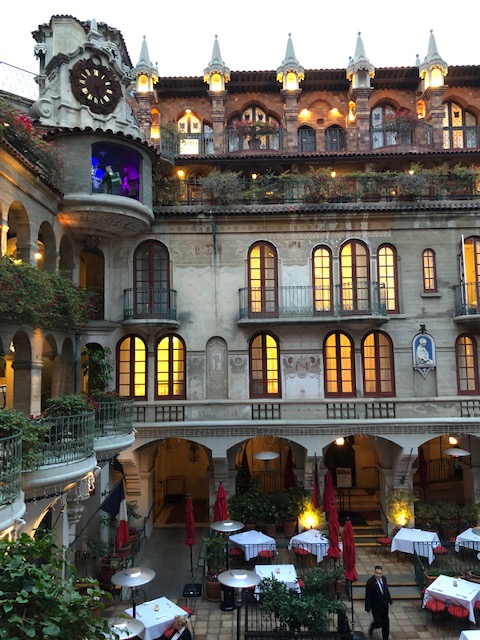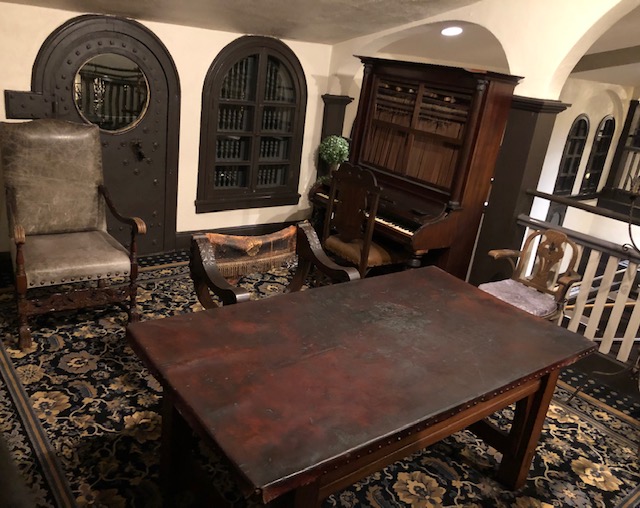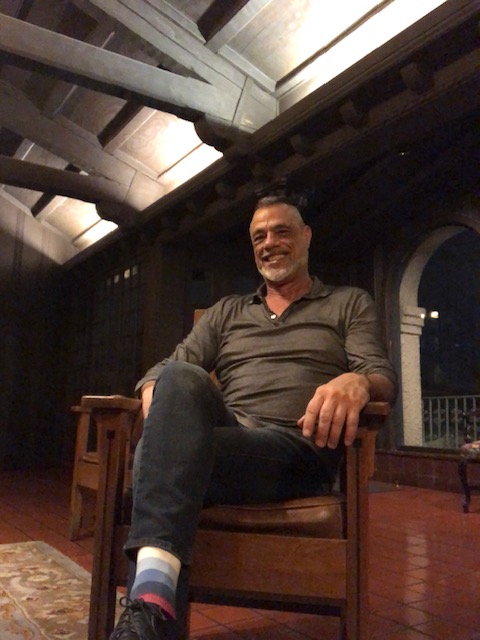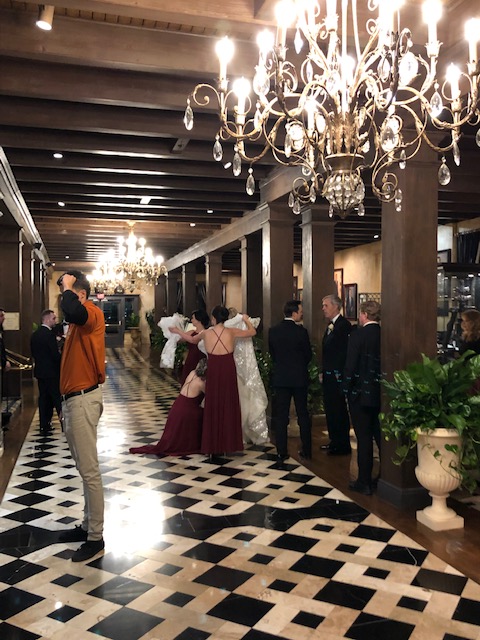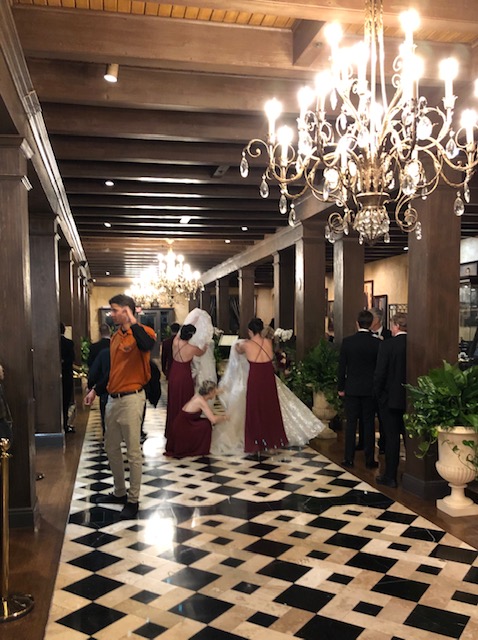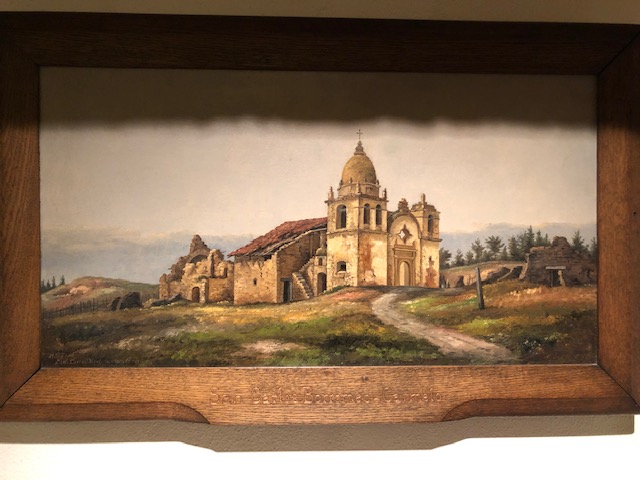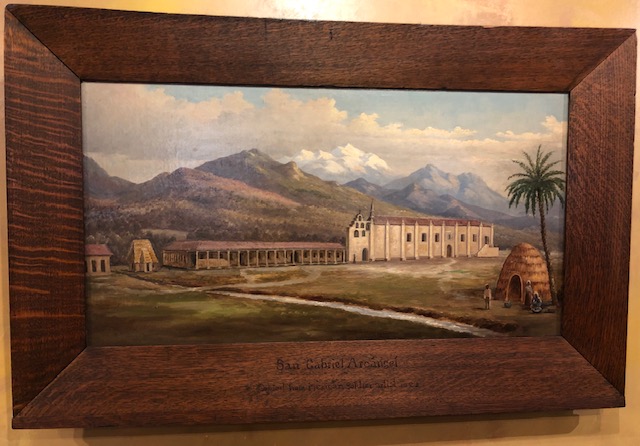Damon is booked to sing at a wedding at the Mission Inn, so Janet and I get to tag along. Patient Reader gets a View of Southern California hospitality. Hotelier Frank Miller believed that hospitality tradition began with the Franciscans at the old Missions. He identified with the Franciscans strongly; not only do artistic representations of Franciscans appear all over the hotel, but at the end of his life he had himself memorialized — as “The Master” — in a stained glass window, dressed in a friar’s robe. (But he also displayed old salvaged Spanish cannons in the courtyard, marked “cobre de Mexico y Peru,” so there you go.)
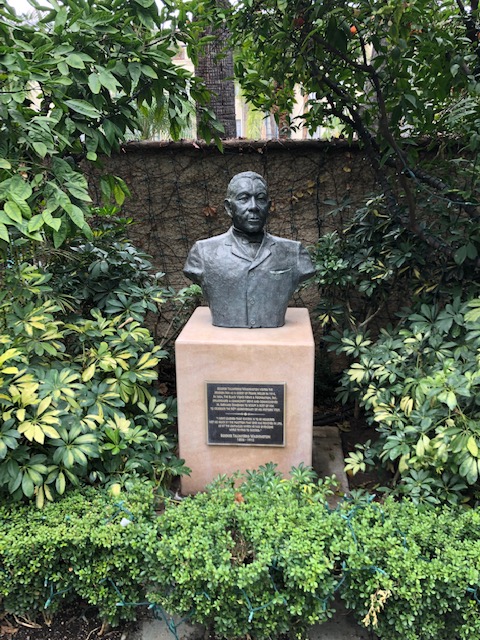
Our visit coincided with the Martin Luther King, Jr.’ Holdiay, so it was good to be greeted by this bust of Civil Rights legend Booker T. Washington in the forecourt.

Since 1900, arriving visitors have been greeted by Napoleon and Josephine. 
Miller liked macaws; their images are all over. 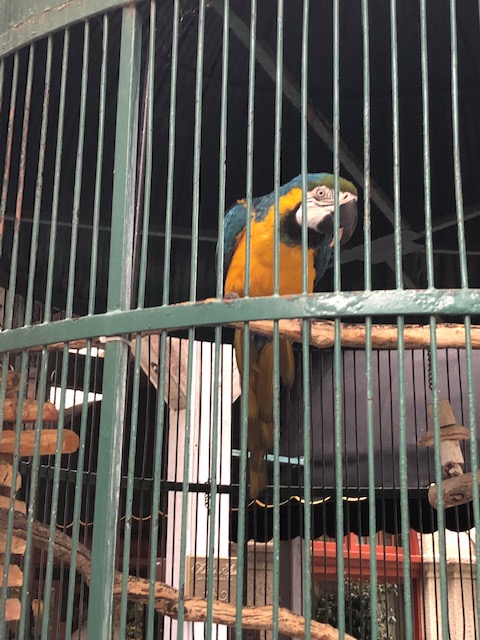
Napoleon, so called 
because of his French blue-and-gold coat.
California invented the Mission Inn, which invented California. Frank Miller built this legendary hostelry as simultaneously a California cultural attraction, and a slick promotion of that very attraction: California itself. It is a place where visitors — Californians, East Coasters, and international tourists alike — have come for over 100 years, to experience and live what Carey McWilliams called the “Spanish Fantasy Past.”Richard Nixon married Pat Ryan at the Mission Inn; Ronald and Nancy Reagan honeymooned here. We’re talking Old California.
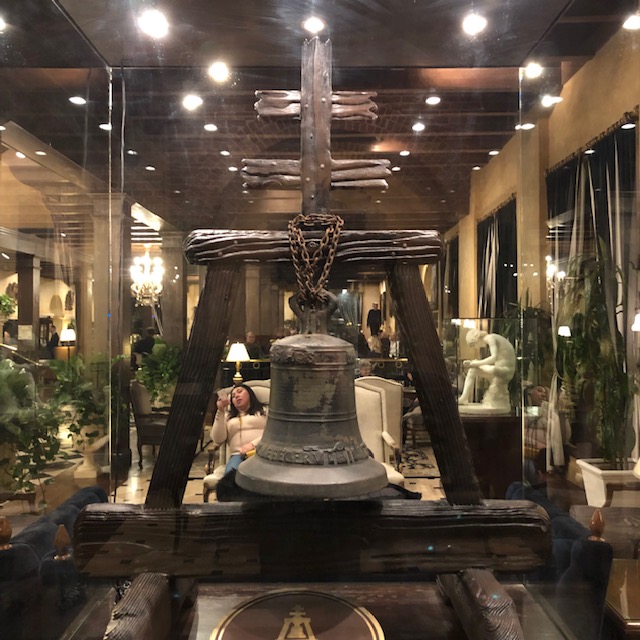
The plaque identifies this Spanish bell from 1274 as the” oldest in Christendom.” The double-crossed yoke became the emblem of the hotel, and of the City of Riverside. 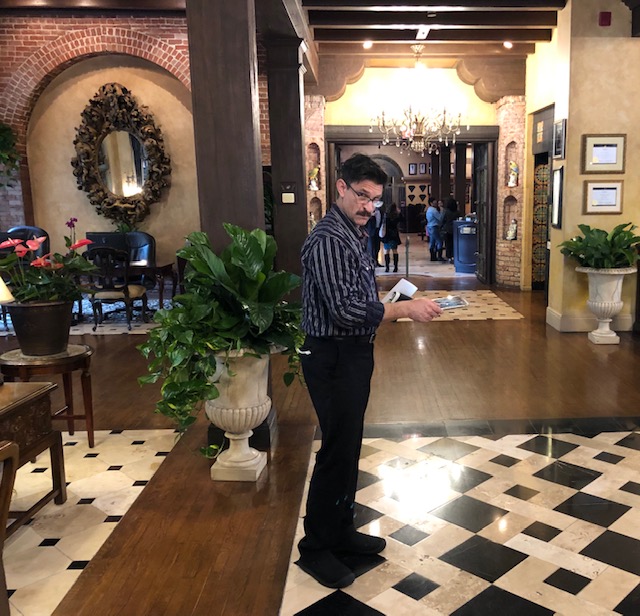
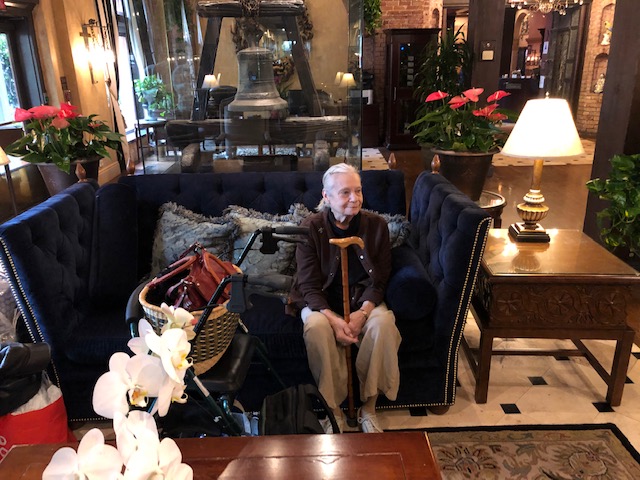
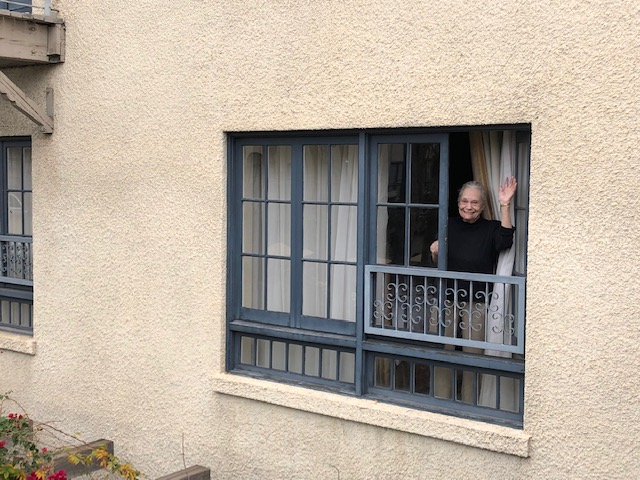
In 1880 Miller purchased his father’s modest 12-room adobe roominghouse, and grew the place up as his fortune, and the city, and the history of the state — which in Frank’s mind were the same thing — allowed. The Inn sprang from the same soil, and was patronized by the same pioneers, the same farmers, the same railroad millionaires, the same Ramona fans and Land of Sunshine and Sunset magazine subscribers, who peopled the region and nurtured Riverside’s billion-dollar navel orange industry.

For the current hotel, the original adobe’s footprint was subsumed as the swank swimming pool in the courtyard. Around it, Myron Hunt built a Gilded Age resort and pleasure ground, adapting local California vernacular architecture (mainly the missions themselves, but also the rancho adobes) into an opium-eater’s vision of what a Californio don, had he been educated in the arts, might want to present of 500 years of his Moorish-Iberian-Mexican-American civilization, if he had the money.
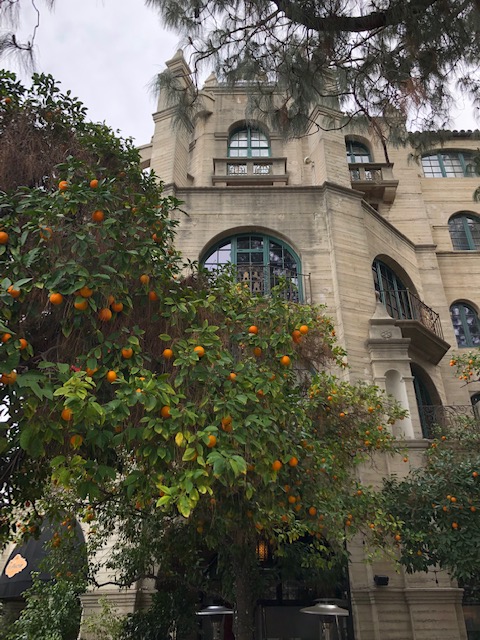
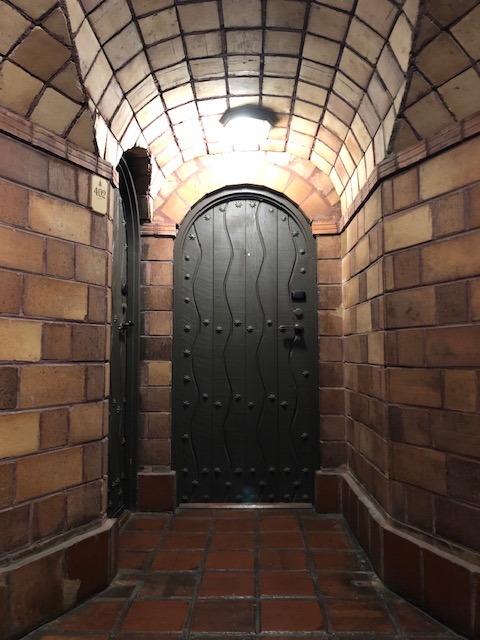
The Spanish river-of-life graces the doors 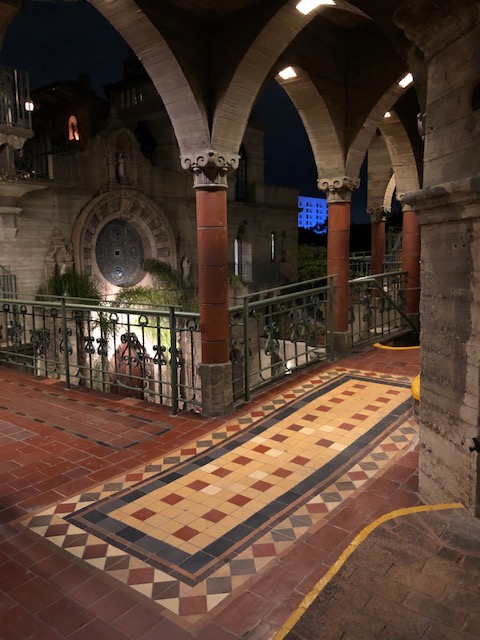
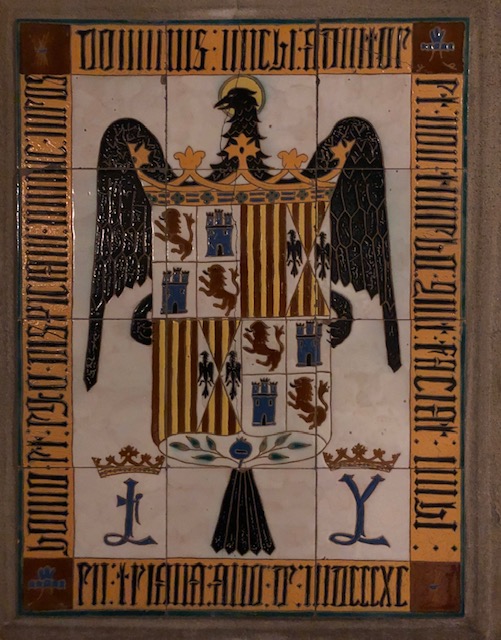


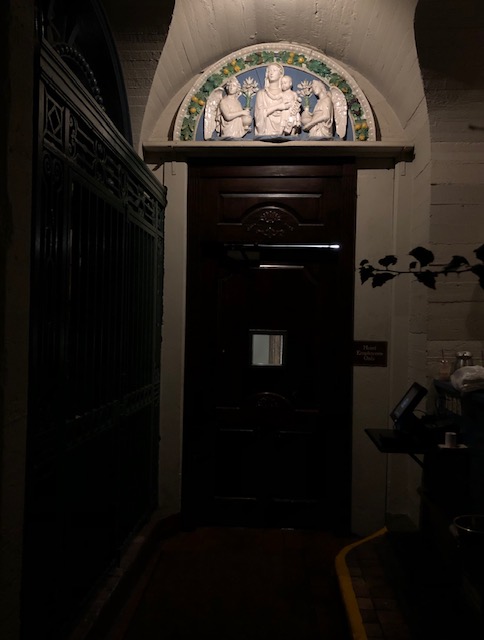
The place is lousy with della Robbia. 

William Keith’s “California Alps” 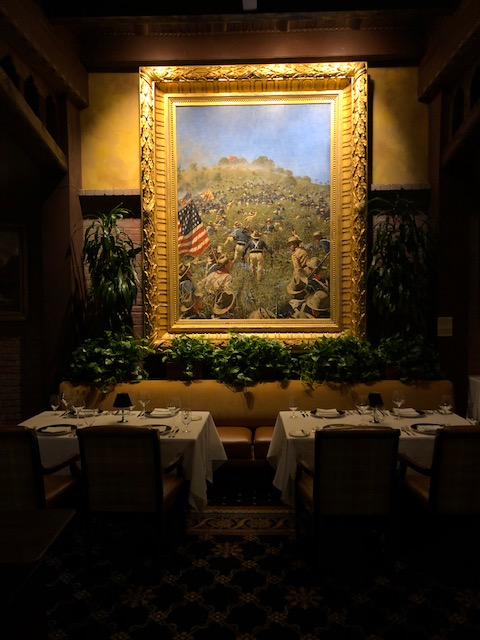
“Charge Up San Juan Hill” by V.V. Vereshchagin 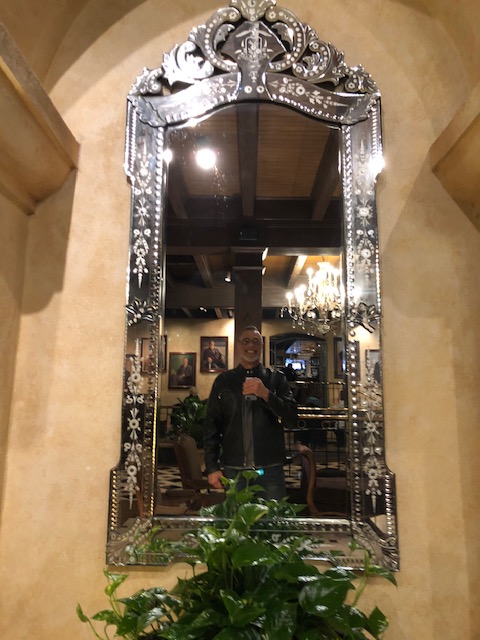
With Damon working and Janet retired I was free to wander and sample the refreshments. There must be a dozen bars, lounges and restaurants on site. My favorite (and most topical) was the “Presidential Lounge.”


Grasping the orb…hmmm… 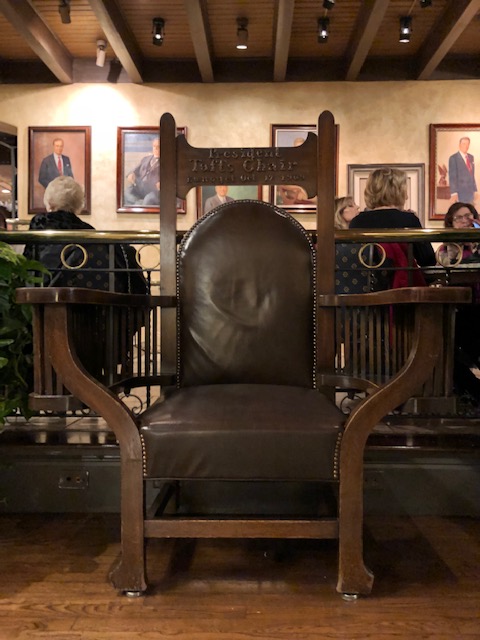


Decades of campaign fund-raising swings through Riverside led to this satisfyingly kitschy Commander-in-Chief-themed bar. It features portraits of all the weary chief executives who, just like One is doing now, have bent their elbows and wet their lips there while thanking God for their safe arrival at the Mission Inn. As I explored I kept running into the beautiful bride, being hustled around by her maids and handlers.
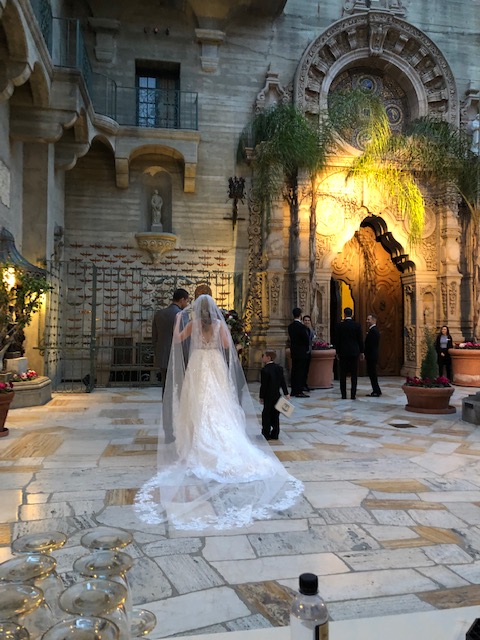
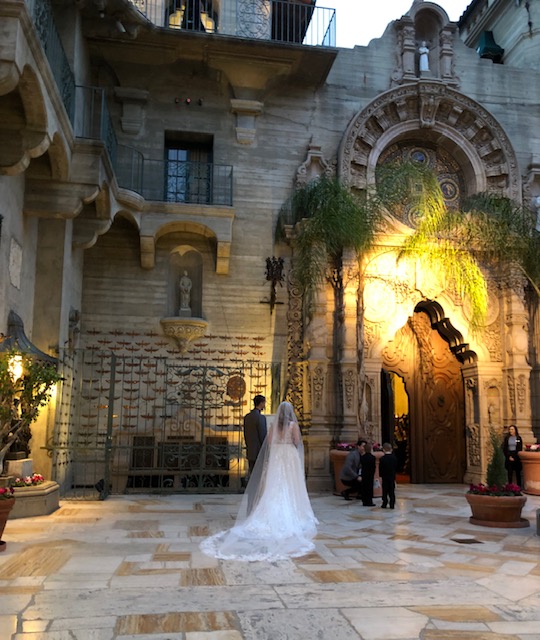

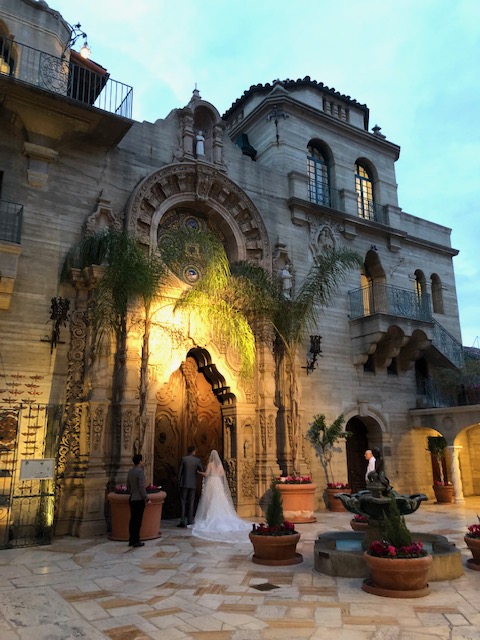

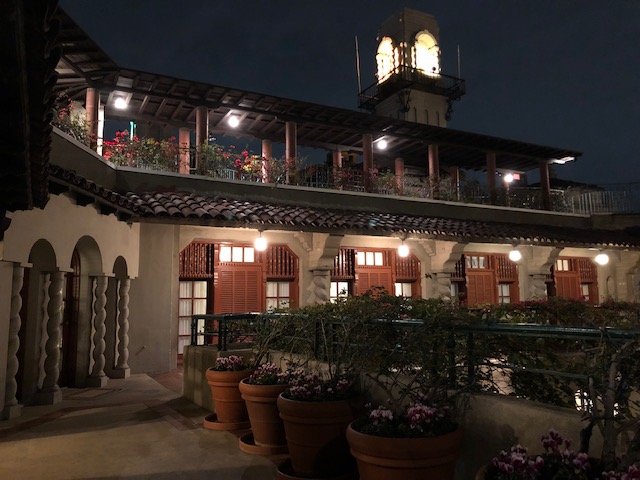
The exclusive luxury suites on “Writers’ Row” 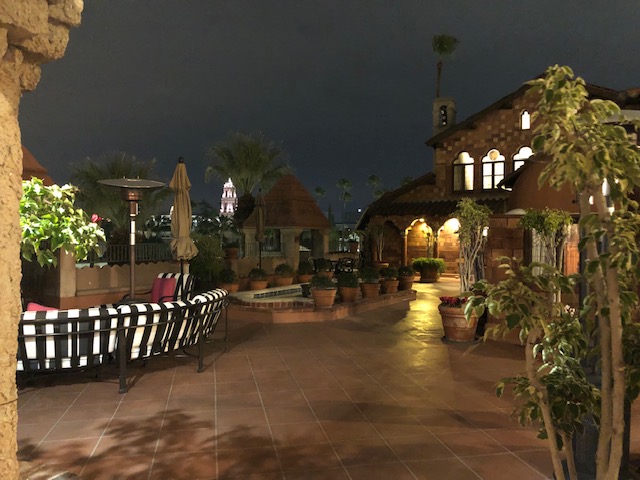
The penthouse suite; I peeked in. 

For thirty years the antiquarian Miller added to his art collection. A bit-player version of William Randolph Hearst, he nonetheless had a strong eye for what would work in his place: he haunted the auction houses and antiques warehouses for Spanish, Mexican and Chinese plunder. He loved bells, emblems of Franciscan California, and collected 800 of them, many hanging around the place.

Campanario modeled after San Gabriel’s 
The bell of the U.S.S. Pres. Arthur 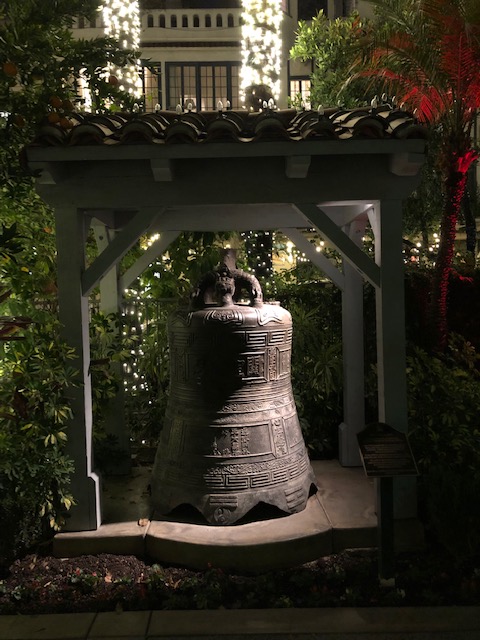
The huge bell of Nanjing, whose temple was toppled in the Boxer Rebellion.
Of all the artwork, the most precious may be 19th century paintings of the California Missions by Henry Chapman Ford. These were influential in publicizing the ruined state of California’s heritage, leading to the whole “Mission Revival.” Many of these were lost for years, and were found in a leaky, moldy attic somewhere in the hotel. They have since been restored and are sprinkled around the hotel. I found many, including a splendid view of San Gabriel with a Tongva kiij in the foreground. I never found the picture of Mission San Fernando, but I sure had fun trying.
